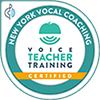
Dysorthographia
What is dysorthographia?
Dysorthographia is a disorder specific to writing and spelling. The
child demonstrates difficulties in learning and mastering spelling rules which
appear both in free writing as well as dictation. The child’s writing reveals
slowness and spelling mistakes, grammar mistakes and conjugation errors. It is
however important to differentiate between temporary spelling difficulties
which can be found throughout a child’s early learning on the one hand, and
those that persist over time on the other.
What are the clinical signs?
Signs of dysorthographia are manifested by:
- Difficulties associating a sound with its letter which can lead to visual and auditory errors such as confusion of close sounds as well as letter or syllable reversal (example: “doy” for “boy”).
- Additions and deletions of letters or syllables within words.
- Confusions of homophones (ex : beat – beet).
- An inability to respect word composition (ex: “anapple” instead of “an apple”).
- Grammatical spelling mistakes (example: noun and verb agreements, verb tenses).
- Difficulties in memorizing the spelling of words resulting in various forms of the same word (example: sord – sorwd).
- Illegible hand writing.
How to act?
The aim of dysorthographia treatment is to:
- Specify the child’s strengths in order to remedy to the weaknesses they present in spelling (improve the letter/sound association, reading decoding, enrich the spelling stock of words inside the memory, etc.).
- Help the child, as needed, to learn, understand, and acquire the basic notions as well as the spelling rules.
- Attend to the child’s needs relative to school work, by preparing individualized learning methods while collaborating with their educators and family.
It is to be noted that collaborating with a psychometrician and/or an occupational therapist would in some cases be recommended in order to remedy to the difficulties in the motor act of writing present in some children with dysorthographia.


